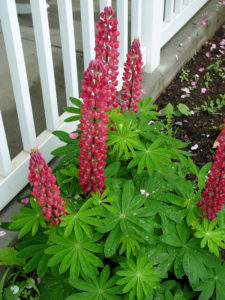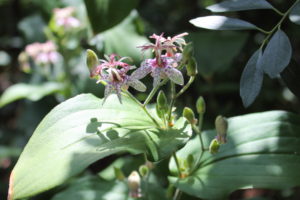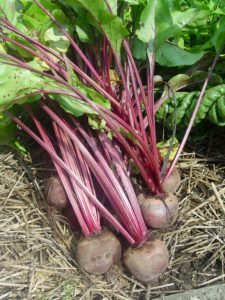Good Plants I Can’t Grow
August 17th, 2021
No matter how much you know about plants or how many right things you do, sometimes plants just die.

Some people can do lupines like this. Not me.
Like it or not, it’s a fact of gardening.
A lot of the time, easy expiration is a shortcoming of particular plants, such as how dwarf Alberta spruces are spider-mite magnets, or how hosta and daylilies are candy to deer, or how delphiniums, heather, and lady’s mantle fry in our increasingly hot summers.
That’s why I didn’t feel too inferior when I killed the persnickety blue poppy, a gorgeous spring bloomer that’s very happy in Vancouver and Great Britain but adamant about not moving to Harrisburg.
My wife once bought me a pack of blue-poppy seeds and challenged me to grow some. I got a few to sprout inside, but only one survived the transplant… and that one died over the first winter before ever thinking about throwing out a petal.
Failure, yes. Understandable? Also yes.
Far more troubling are the “enigmas.”
These are the plants we should be able to grow without much trouble, and, in fact, are ones that most people grow with their trowels tied behind their back.
For some reason, I have a few enigmas that just won’t grow well for me even though they seem to thrive in other people’s gardens.
I suspect I’m not alone in that… although I’ll bet enigma plants are different ones from gardener to gardener.
For me, I can’t keep a lupine alive to save my life.
I thought these spiked hybrid beauties just didn’t like our heat, and so I filed them in the general don’t-do-well-here category… until I heard several other local gardeners tell me how much they love their lupines.
Apparently, lupines don’t mind sweating it out in some gardens. Just not mine.
I’ve also had trouble growing tricyrtis – better known as toad lilies, a bulb that flowers in late summer.

Toad lilies are on my can’t-do list.
I’ve killed them in a variety of settings and cringe when fielding questions from gardeners wondering how to keep their toad lilies from spreading too much. The best answer to that seems to be, “Transplant them into my garden.”
Over the years, I’ve also had limited success at best with the likes of veronica, Jacob’s ladder, baby’s breath, Jupiter’s beard, and daphne.
Most of those tend to be short-lived by nature, but short-lived in my case has been one season – if even that.
The champion enigma for me, though, is the lowly red beet.
This basic vegetable-garden root crop has been cultivated since at least Medieval times and supposedly even grew in the ancient Hanging Gardens of Babylon.
Beets grow well from Chile to Russia and are so productive on a large scale that they account for 20 percent of the world’s sugar.

These few are about as good as I can do with beets.
Dwight Schrute of The Office fame grew a whole beet farm outside of Scranton – in his spare time, no less.
Yet in my garden, beets are almost a waste of space.
I’ve tried.
I’ve tried lots of different varieties from trusty heirlooms to bullet-proof hybrids.
I’ve tried planting at different times.
I’ve tried fertilizing, watering more (and less), and planting them in different parts of the garden.
Yet in more than 40 years of gardening, I can’t ever remember bringing in what I’d call a bountiful harvest of beets.
The seeds germinate well enough.
The plants usually produce a decent quantity of leaves without obvious disease or bug imposition.
The problem is in getting the roots to grow to a uniformly decent size.
I might get a few that reach the kind of billiard-ball size you see in grocery stores, but for the most part, my crop looks more like radishes. Way too many never swell at all.
I guess I could just harvest the leaves (“beet greens”) and call it a day.
But that’s not what gardeners do. We don’t give up.
We’re optimistic enough (or maybe dumb enough) to keep trying year after year, hoping that the weather or the variety or the timing or the karma will finally be just right to deliver the crop that catalog pictures are made of.
I’m still waiting.
Maybe I should try lupines again.







